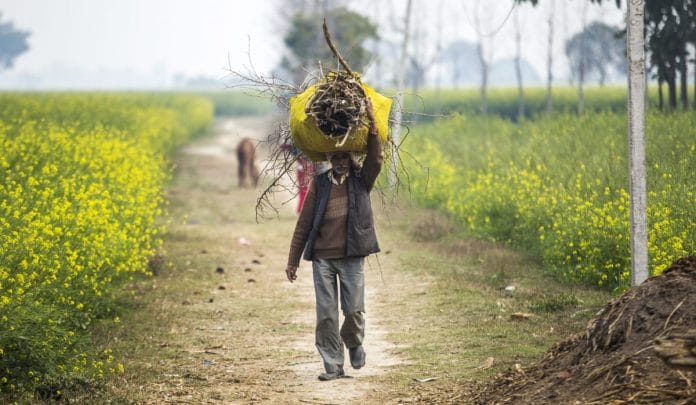New Delhi: More than 270 million people in India were lifted out of poverty from 2005 to 2016 — the largest by any country in that period — says a study by the Oxford Poverty and Human Development Initiative (OPHI) in collaboration with the United Nations Development Programme.
Released Thursday, the study titled ‘Charting pathways out of multidimensional poverty: Achieving the SDGs’ was based on a global multidimensional poverty index (MPI) which measures the complexities of poor people’s lives, individually and collectively, each year.
The MPI was observed in 75 countries from the East, Central and South Asia, Europe, Latin America and the Caribbean, Sub-Saharan Africa as well as the Pacific. The report was meant to provide a comprehensive picture of global trends in multidimensional poverty covering five billion people.
The study has found that four countries — India Armenia, Nicaragua and North Macedonia — have reduced their MPI by half or more in 5.5 to 10.5 years.
According to the study, 65 out of the 75 countries that were studied have lowered their MPI value and 50 nations have even reduced the number of people living in poverty.
Approximately 273 million people moved out of multidimensional poverty in India, the study noted. It also states that three South Asian nations — India, Bangladesh and Nepal — were among the 16 fastest countries to reduce their MPI value.
OPHI director Sabina Alkire, who led the development of the multidimensional poverty index (MPI) in 2010, said, “India remains the country that has the largest reduction in number of poor, with over 270 million persons leaving poverty 2005-6 to 2015-16.”
The study also addresses the coronavirus pandemic, stating how the global crisis had unfolded in the middle of the analysis. While the study could not gauge the rise of worldwide poverty after the pandemic, it has predicted that if left unaddressed the Covid crisis could set back global progress across 70 developing countries by 3-10 years.
Also read: Hunger and obesity are both getting worse around the world due to Covid fallout
Calculating multidimensional poverty
According to the study, it is the poor and disadvantaged people who suffer the most from climate change and environmental degradation, which is why they carry a “double burden”.
They are the most vulnerable to environmental degradation, air pollution, lack of clean water, and unhealthy sanitation conditions and also the ones who don’t get sufficient nutrition or proper housing.
The MPI is calculated based on these indicators — deprivation of nutrition, schooling, cooking fuel, sanitation, drinking water, housing and assets. The 75 nations in the study were given an intensity of deprivation percentage based on their MPI values.
According to the study, 55.1 per cent of the population in India lived under multidimensional poverty in 2005-06. In 2015-16, it came down to 27.9 per cent.
As of 2015-16, the intensity of deprivation was 43.9 per cent, while the population under severe multidimensional poverty was 8.8 per cent.
According to the study, 37.7 crore people in India lived under multidimensional poverty as of 2018.
As of 2016, the percentage of people in India who were deprived of nutrition was 21.2 per cent. People who were deprived of cooking fuel was 26.2 per cent. Those deprived of sanitation and drinking water were 24.6 per cent and 6.2 per cent respectively. Deprivation of electricity and housing figures stood at 8.6 per cent and 23.6 per cent for the year.
Immunisation
The study also highlights the correlation between multidimensional poverty and immunisation. The percentage of children receiving three doses of diphtheria, tetanus and pertussis (DTP3) vaccines had been used as an indicator of how well countries were providing routine immunisation.
According to the study, 10 countries accounted for 60 per cent unvaccinated children. Around 40 per cent of the children who were not vaccinated for DTP3 lived in four countries — India, Nigeria, Pakistan and Indonesia.
The report also stated that populated developing countries could contribute considerably to a large number of unvaccinated children despite achieving high immunisation coverage. The study cited India as an example where 2.6 million children were “undervaccinated”.
Also read: Covid crisis could drive up global poverty for the first time since the 1990s







surprising . no ministers and bhakts and media apologists claiming “Modi hai tho mumkin hai. Hahaha. is there anything this govt of six years achieved other than destroying the economy even before pandemic struck and bungling on almost all areas. MNRega was derided and ridiculed by the supreme ruler. but for mgnrega where would have been rural population. and the congress as usual found wanting in highlighting this. ofcourse regional parties which were in power also contributed. this govt only , other than rhetoric, media spins, and tall claims , has not delivered anything in the last six years other than the worst schemes like demonitisation , gst, and the utterly flopped lock down.
this is a clear bias towards Congress government who looted India between 2004 and 14. We have seen in past some data where it was clearly depicting under the current government the poverty is reducing the fastest in the world. I understand the obligation of this media house owned by non other than a congress or so called leftist mindset . Kindly publish all the data between 2014 until 19. This will show you unbiased reporting. Please dont be congressi dog.
Count again between 2017 to 2020. Poverty no longer defined as family without any shelter but family who bought 3BHK flat on loan and now don’t have money to buy foods for children because lost job. that family also poor.
Middle class don’t have emergency to continue even 3 months to survive.